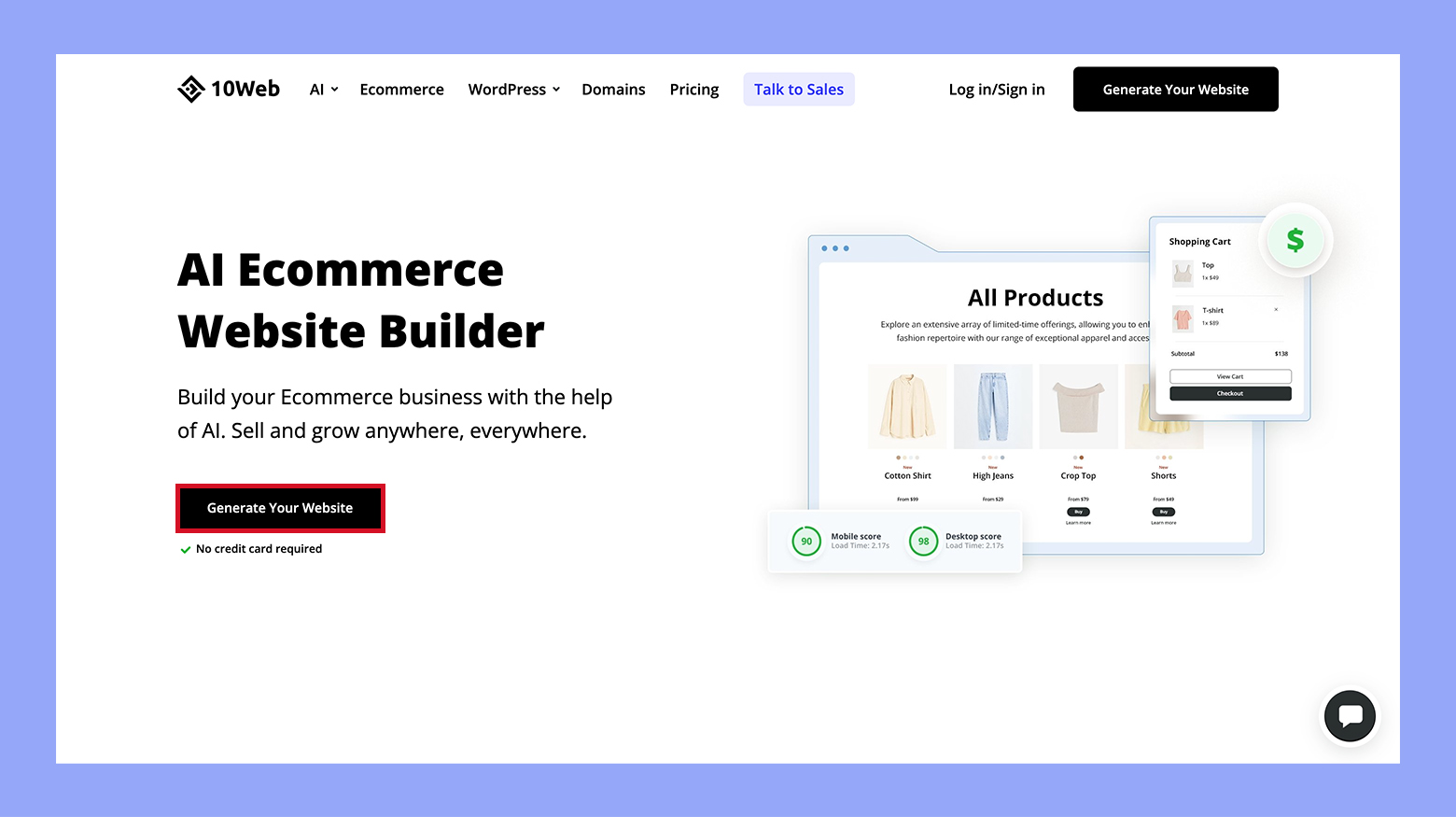Starting a landscaping business provides the unique opportunity to combine creativity with practical skills, transforming outdoor spaces and enhancing property values. This guide offers crucial tips for success, from understanding diverse services like lawn care and garden design to crafting a strategic business plan.
The landscaping industry not only promises personal fulfillment through creating beautiful environments but also offers significant financial rewards through a variety of high-demand services.
FAQ
How profitable is a small landscaping business?
Is a landscaping business a good idea?
How to start landscaping from scratch?
How to start a landscaping side hustle?
Stage 1: Laying the foundation of your landscaping business
Starting a landscaping business involves laying a solid foundation. You need to understand the industry, create a detailed business plan, choose the right business structure, and complete the registration process.
Step 1: Understand the landscaping industry
Understanding the landscaping industry before you learn how to start a landscaping business is crucial before you dive into starting your own business. Landscaping includes a wide range of services like lawn care, garden design, tree trimming, and irrigation system installation. It’s unique and has its specificities.
Research current trends and identify what services are in high demand. Knowing your local market can help you identify your target customers. Check out your competitors to see what they’re offering and find out what sets you apart.
It’s important to keep up with industry regulations and standards. This helps you provide top-quality service and avoid potential legal issues.
Identifying your target market
Start by identifying who needs your landscaping services. This could include homeowners, businesses, or apartment complexes. Think about the types of clients in your area who are likely to need regular lawn care or landscaping projects.
Once you have identified your target market, tailor your services to meet their specific needs. For example, busy professionals might prefer weekly lawn maintenance, while businesses may look for seasonal landscaping upgrades. Knowing your clients helps you offer the right services at the right price.
Step 2: Create your business plan
When you learn how to start a landscaping business, you also learn that creating a business plan is the next step. A business plan outlines your goals and the strategies you’ll use to achieve them. Start by describing your landscaping services and the market you plan to serve.
List out your startup costs, including equipment, insurance, marketing, and licensing. Essential expenses may include mowers, trimmers, hand tools, and other equipment.
Pricing is another key factor. Research local rates and decide whether you want to offer competitive pricing or premium services. Outline your marketing strategy, such as online advertising, flyers, or networking with local businesses.
Step 3: Choose your business structure
Choosing your business structure is an important decision. The structure you choose will affect your taxes, liability, and how you can raise money.
- An LLC (Limited liability company) provides liability protection and flexible tax options.
- A sole proprietorship is easy to set up and gives you complete control, but offers no liability protection.
- A partnership allows you to share the workload and responsibility with another person.
- A corporation provides the strongest protection against personal liability but comes with more regulations and higher costs.
Carefully consider your options and seek advice from a legal body. The best business structure for a landscaping business is typically an LLC, which offers personal liability protection, tax flexibility, and ease of setup compared to corporations. It combines elements of a partnership and corporation, providing liability protection like a corporation while allowing profits to pass through to the owners’ personal tax returns like a partnership.
Step 4: Set a budget and finance preparation
Creating a budget is the next essential. It helps you manage your money and ensures you have enough to cover new business costs and ongoing expenses. Begin by listing all potential costs, such as equipment, marketing, and payroll. Separate fixed costs like rent and variable costs like supplies.
Here is an example of monthly expense estimations:
| Expense | Estimated Cost |
| Equipment | $2000 |
| Marketing | $500 |
| Payroll | $3000 |
| Supplies | $500 |
Track your expenses and adjust your budget as needed. Aim to keep some cash reserves for emergencies or unexpected costs.
Understanding pricing and rates
Setting the right prices for your services is fundamental. Research what your competitors charge by calling or visiting their websites. Factor in your costs along with desired profits to determine your rates.
Here is an example of a pricing structure:
- Lawn mowing: $30 per visit
- Landscaping design: $500 per project
- Seasonal cleanup: $150 per session
Ensure your prices cover your costs and provide a fair profit margin. Adjust rates as your business grows or market conditions change.
Open a business bank account
A business bank account helps you keep your finances organized and separate from personal funds. Choose a bank that offers low fees and good customer service. Opening an account typically requires an EIN (Employer Identification Number) and official business documents. Having a separate account simplifies tax preparation and financial tracking.
Hire an accountant
When starting a landscaping business, an accountant can help manage your finances and ensure your taxes are correctly filed. Look for someone with experience in small businesses. They can assist with bookkeeping, payroll, tax deductions, and financial planning. Hiring an accountant saves time and reduces the risk of costly errors.
Step 5: Secure licenses and permits
Check local and state requirements for landscaping business licenses and permits. This often includes a general business license, specific landscaping permits, and possibly, a contractor’s license. Compliance with local regulations helps avoid fines and legal issues.
To understand which one(s) you will need, visit your local government website for detailed information.
Getting the right insurance
Insurance protects your business from potential risks like accidents or property damage. Common types required include general liability and workers’ compensation insurance.
Types of insurance include general liability, which covers accidents or damages, and workers’ compensation, which covers employee injuries.
Speak with an insurance agent to determine the best coverage for your needs and ensure your business is adequately protected.
Stage 2: Preparing for operations
Starting a landscaping business requires acquiring key tools and setting up an efficient work environment. You need the right equipment, transportation, workspace, and scheduling system.
Step 1: Acquire essential equipment
Gathering the necessary tools is important for your landscaping services. Choosing the right equipment ensures efficiency and quality in your work. Some must-have tools include:
- Mowers: Essential for lawn care. Consider investing in both a push mower and a ride-on mower for various job sizes.
- Blowers: Helps in quickly clearing leaves and debris. Backpack blowers are convenient for larger areas.
- Trimmers: Necessary for edging and detailing. Gas-powered trimmers provide more power, while electric ones are lighter and quieter.
- Hand Tools: Items like shovels, rakes, and pruning shears are vital for detailed work.
Consider investing in durable, high-quality equipment to avoid frequent replacements. Research and compare different brands to ensure you make informed choices. Inspect used tools for wear and tear if you’re buying second-hand
Maintain and store your tools properly to extend their lifespan. Create a maintenance schedule for regular checkups and repairs, especially for mowers and trimmers. Keeping your equipment in good condition can prevent downtime and keep your business running smoothly.
Renting vs. buying equipment
Deciding whether to rent or buy equipment depends on your budget, the frequency of use, and storage capacity.
- Renting: Ideal for beginners or those with limited capital. Renting allows you to use high-quality equipment without a large upfront investment. It’s also a good option for infrequent jobs requiring specialized tools.
- Buying: If you plan to use the equipment regularly, owning makes more financial sense in the long run. It provides the convenience of always having the tools you need ready and can be more cost-effective over time.
Consider the cost of ownership, including maintenance and storage, when deciding which option is best for your business. In all, choosing and maintaining the right tools, and deciding between renting and buying, are foundational steps in establishing a successful landscaping business.
Step 2: Meet vehicle and transportation needs
To transport your equipment, you’ll need a reliable vehicle. Many landscapers choose a truck due to its capacity and versatility. Ensure your truck has enough room for large items like mowers and trimmers.
If you offer lawn care services, a trailer might be necessary for hauling extra tools or debris. Make sure the trailer is secure and meets road safety standards. Keep vehicle maintenance in mind, including regular oil changes and tire checks, to avoid breakdowns.
Consider branding your vehicle with your business name and contact information. This can act as mobile advertising while you’re on the job, attracting potential customers in your area.
Step 3: Set up your workspace
A dedicated workspace helps you stay organized. You might start with a small office space or even a corner in your garage. Set up storage for your tools, ensuring they are easily accessible but safely stored.
Create an area for tool maintenance where you can sharpen blades and perform repairs. Keep all your maintenance supplies, like oil and replacement parts, in one place.
Organize customer records and scheduling tools in your office. Digital tools like a computer and printer can help manage invoices and schedules. Having a well-organized workspace increases efficiency and helps you stay focused on your landscaping jobs.
Step 4: Develop an efficient schedule
Managing your time and appointments is crucial. Use a scheduling software or app that can help you organize your workday. Look for features like reminders, calendar sync, and customer management.
Plan your daily routes to minimize travel time between jobs, saving both time and fuel. Keep track of recurring clients and create a system for regular follow-ups.
Ensure you have a clear process for handling cancellations or rescheduling. Communicate your schedule clearly with your clients, and always confirm appointments. Efficient scheduling can improve your productivity, customer satisfaction, and overall business operation.
Step 5: Define your landscaping services
Start with basic services that most customers need. This includes lawn maintenance, which covers mowing, trimming, and edging. Landscape design is also important, allowing you to create beautiful outdoor spaces for your clients.
Installation services can include planting trees, shrubs, and flowers. Additionally, consider irrigation setup to help maintain the health of lawns and gardens. Regular maintenance like fertilization and weed control is crucial to keep landscapes looking their best.
Offering a range of removal services such as the removal of dead plants, debris, and snow (in winter) can also be key to your business.
Consider additional services and seasonal demand
To cater to seasonal changes, you can offer seasonal services. In the fall, consider offering leaf removal and garden bed preparations for winter. During winter and early spring, services like snow removal and garden cleanup can be in high demand.
Specialized offers can set you apart from competitors. This includes landscape lighting, pest control, and custom hardscapes like patios and walkways. These services can attract more clients and increase your business’s profitability. Don’t forget to adjust your service offerings based on the season to meet specific client needs throughout the year.
By combining these essential and additional services, you’ll be well on your way to running a successful landscaping business.
Stage 3: Build your branding and do the marketing
Building a strong brand and marketing strategy is crucial for attracting customers and standing out from the competition. Here’s how to develop your brand identity and market your landscaping business effectively.
Step 1: Develop a strong brand identity
Your brand identity sets the tone for your business and helps customers remember who you are. Start by choosing a business name that is easy to spell, say, and remember.
- Create a logo that reflects the style of your services—consider using a logo generator if you need help.
- Brand identity also includes your business’s colors, fonts, and overall design. Use these elements consistently across all materials. This includes your website, business cards, and flyers to create a cohesive look.
- Present what makes your landscaping business unique. Highlight your specialties, whether it’s eco-friendly practices, standout customer service, or unique landscaping styles. Be sure your brand communicates these strengths.
Step 2: Create an engaging and professional website
Your website is often the first impression potential customers have of your business. Make sure it’s professional, easy to navigate, and includes key information about your services. To achieve this efficiently, consider using the 10Web AI Website Builder, an AI-powered platform for creating stunning, functional websites.
The platform’s AI capabilities ensure that your website is not only visually appealing but also optimized for user experience. Include sections for services, pricing, and customer testimonials to build trust and provide clear information to potential clients.
Here is how you can do it in simple steps:
- Go to 10Web.io and click on Generate Your Website.

- Proceed and describe your business in a few words. You can also enhance the description with AI to get a better result.

- Click Generate and wait a few seconds until your site is ready.

You will get a ready-to-customize website, which you can easily adjust to your needs. With the help of AI, you can also add additional pages to your heart’s content and have the end website result you want.
Step 3: Create your marketing strategy
A well-thought-out marketing strategy will help you reach your target audience effectively.
- Begin by setting a marketing budget to guide your spending decisions.
- Identify your ideal customers and adjust your marketing messages to their needs and preferences. This could involve using various channels such as social media, email marketing, and local advertising like flyers and billboards.
- Experiment with different marketing tactics and track their performance. Refine your strategy based on what works best for attracting new business.
- Collect customer feedback regularly to improve your services and marketing efforts.
Step 4: Use the power of social media
Social media platforms like Instagram are powerful tools for marketing your landscaping business. Start by creating a professional profile that includes your logo, business name, and contact information.
Post regularly with content that is engaging and relevant to your audience. Share photos of completed projects, customer testimonials, and behind-the-scenes looks at your work. Consider running promotions or offering discounts to your social media followers to foster engagement.
Leverage paid advertising options available on platforms like Facebook and Instagram to reach a wider audience. Target ads based on location and interests to attract potential customers who are most likely to need your services.
By focusing on branding and marketing, you can build a strong presence for your landscaping business, attract new customers, and grow your business effectively.
Step 5: Building a referral network
Referrals are one of the most effective ways to grow your clientele. Begin by asking your current clients if they can recommend you to friends, family, or colleagues. Offering incentives such as discounts on future services can also encourage referrals.
You might also consider leaving business cards or flyers with current clients or asking them to place a lawn sign in their yard for the season. This way, potential clients in the neighborhood can easily contact you when they need landscaping services.
Tips to succeed with your landscaping business
For a landscaping business, like any other business, to succeed there are tips you can follow and consider. Effective operations and management are crucial for running a successful landscaping business. You need to manage daily activities, ensure quality control, navigate competition, build a strong team, and focus on hiring and training.
Provide exceptional customer service
Exceptional customer service is key to retaining clients and getting referrals. Be punctual, listen to what your clients want, and ensure your work meets or exceeds their expectations. Small touches such as follow-up calls or thank-you notes can make a big difference.
Invest in quality equipment and a skilled team to ensure the best results. Happy customers are more likely to recommend you to others and use your services again in the future. Consistently delivering high-quality service builds trust and leads to a more successful business.
Manage daily operations
Effective day-to-day management is critical. You’ll need a clear workflow for scheduling jobs, tracking employee hours, and managing customer appointments. Use software to streamline these processes.
- Set priorities for daily tasks.
- Use scheduling software.
- Keep detailed logs of work completed.
Quality control ensures customer satisfaction. Regularly inspect work and seek customer feedback. Develop a standard checklist for jobs to maintain consistency.
Build your team
A strong team is the backbone of your business. Look for workers who are committed, skilled, and willing to learn.
Find the right candidates by using diverse hiring methods. Post jobs on various platforms and attend job fairs.
Conduct staff training. Training improves efficiency and quality. Offer regular training sessions on new tools, techniques, and safety protocols.
Managing operations and focusing on team-building will help your landscaping business thrive. Use technology to track daily tasks, maintain high-quality work, and grow steadily.
Explore new markets for growth
To find new customers for your landscaping business, think about expanding your services or moving into areas where you don’t currently operate. Start by researching the demand in different neighborhoods or cities. You can offer new services like hardscaping (patios, walkways) or seasonal services (snow removal, holiday lighting).
A good way to measure interest is to use online surveys or social media polls. Connecting with local real estate agents or home builders can also give you leads on new opportunities. Building a good website and using SEO can help new customers find you online.
Conclusion
Starting a landscaping business is an exciting venture that blends creativity with entrepreneurship, offering the potential for significant financial rewards and the satisfaction of beautifying outdoor spaces.
As outlined in this guide, the key to success lies in a solid foundation—thorough industry knowledge, a well-written business plan, strategic marketing, and effective operations management.
By focusing on quality service, leveraging the right tools, and continuously seeking growth opportunities, your landscaping business can thrive. Remember to adapt to changing trends and customer needs, ensuring that your business remains competitive and relevant.
Create your custom online store in minutes with 10Web AI Ecommerce Website Builder and take your business online.

Looking to sell online?
















